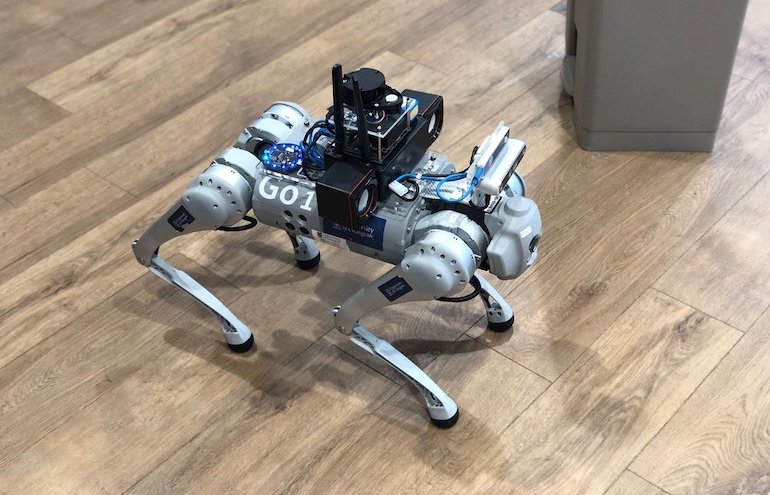An interdisciplinary British research team has developed an intriguing new assistive robot named RoboGuide that could substantially improve mobility for the visually impaired. Leveraging advanced mapping and natural language processing capabilities, RoboGuide acts as a responsive guide dog accompanying users, avoiding obstacles while answering questions on surroundings verbally.
After successful initial trials, the scientists envision the technology someday assisting the over 2 billion globally with vision impairments — potentially restoring levels of self-sufficiency and confidence while navigating familiar and unfamiliar spaces alike.
Moving Beyond Line-of-Sight and GPS Limitations
Many existing assistive robots suffer constraints that diminish real-world usefulness, the team identified. For instance, computer vision reliably recognizing movement in direct line-of-sight still struggles dynamically navigating complex routes with sharp turns or irregular obstacles. Robots employing GPS mapping also easily get confused indoors where satellite connections weaken.
RoboGuide’s diverse sensory rig mitigates such issues. LIDAR laser scanning rapidly constructs 3D maps of winding hallways or cluttered offices down to precise furniture locations. Sophisticated Simultaneous Localization and Mapping (SLAM) algorithms then plot optimal paths avoiding walls or sudden pedestrian traffic for users to follow via gentle tugs on an attached tether.
Natural Language Makes Interactions More Intuitive
But unlike most counterparts, RoboGuide also sports considerable conversational intelligence via neural networks honed on vast repositories of language data. Ask about a nearby painting while touring a museum, and RoboGuide can instantly access associated details to enrich the experience.
The loquacious robot even employs the same large language models underlying popular chatbot ChatGPT for engaging, knowledgeable discussions. It makes interactions more natural and adds capabilities like answering impromptu questions atop basic navigation.
Restoring Independence Through Thoughtful Design
During early trials guiding volunteers at a Glasgow museum, RoboGuide demonstrated key strengths researchers now aim to refine toward eventual commercial availability. Testers appreciated the reliable indoor routing and running exhibit commentary keeping them actively engaged.
The project lead summed up their objective as developing an adaptable platform enhancing self-sufficiency and confidence for the blind or vision-impaired. It's a profoundly impactful use case given over 2 billion globally could benefit from such assistive automation.
By integrating the latest in self-driving vehicles, voice assistants, and AI, tools like RoboGuide seek to restore cherished independence enabling users to rediscover simple joys of exploring new spaces. And the Glasgow team believes purpose-built mobile robots only scratch the surface of possibilities improving navigation and learning experiences those with impairments too commonly find restricted today.


















